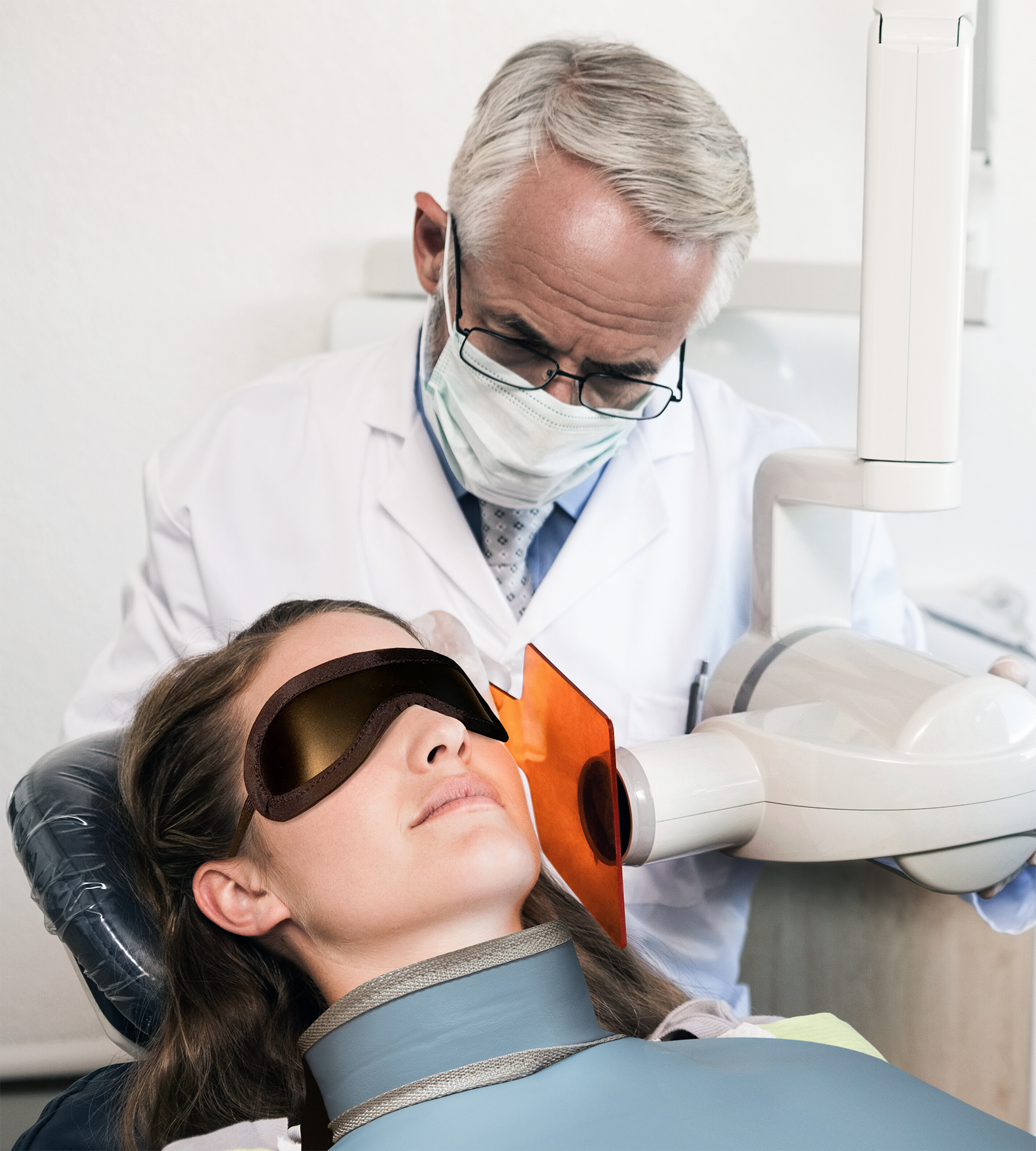The Eyes Have It
Radiation sensitivity shows a need for eye shielding during dental x-rays.
The Eyes Have It | Image Credit: © OCU-GUARD

My perspective on shielding patients during x-rays changed when I met Steve Maiman, founder and CEO of OCU-GUARD, and was introduced to his novel, cost-effective, intricately designed eye shield tailored for both adults and children. Although I previously hadn’t considered eye protection for radiation exposure, Maiman showed me a wealth of compelling scientific evidence underscoring the imperative of safeguarding the eyes against even minimal doses of radiation.
Coincidentally, during a recent dental visit where I underwent a comprehensive series of images, I took careful note of the proximity of the x-ray unit to my eyes, particularly during anterior imaging. Although opinions about radiation protection during dental radiographs have recently been modified, the eyes were not addressed by the American Dental Association.1
Lou Shuman (LS): Why did you create OCU-GUARD?
Steve Maiman (SM): I was getting dental x-rays at a routine appointment, and the assistant put a protective lead apron on [me] that covered my body and my neck. After the x-rays, I asked my dentist if they ever considered covering the eyes. He said no but did not have a definitive answer on why not. I decided to pursue the question further and asked my brother, a practicing radiologist, whether ionizing x-rays are harmful to the eye, particularly the lens tissue. This led me to both further research and to the creation of OCU-GUARD.
LS: Can x-rays harm lens tissue of the eyes?
SM: The lens tissue of the human eye is very sensitive. And the sensitivity is exponentially increased in children because they are still developing physically and their cells are multiplying quickly. They are far more sensitive than adults to radiation. Even more importantly, radiation is cumulative—once irradiated, the damage stays with you. When kids start their early dentistry and orthodontic treatment and they keep getting x-rays, radiation exposure keeps adding up, from youth to old age.
LS: So why does that matter, if modern x-rays emit lower amounts of radiation?
SM: As we get older, we [are] more susceptible to cataracts regardless of whether we’ve gone to the dentist or not. But having x-rays to the eyes over a lifetime can contribute to an early onset of cataracts. So that can be part of the problem.
LS: Is there any research to back up the need for this product?
SM: There are now [findings from] over 30 published studies demonstrating that x-rays cause tissue changes and damage to the lens tissue. The unique cells of the eyes are extremely radiosensitive, and unlike most cells in the human body, once irradiated, [they] will not regenerate.
At a session of the FDI General Assembly called “Radiation Safety in Dentistry,” the speaker said, “Exposure to ionizing radiation carries the risk of harm. The effect on the eye may be caused by lower doses than previously considered. All reasonable means should be used to reduce radiation exposure, without compromising diagnosis, when radiographs are taken.”2
Roy Rubinfeld, MD, MA, agrees, saying, “As a clinical professor of ophthalmology and practicing eye surgeon, [I can say] it is known that dental x-rays, even in low dosages, can increase the risk of earlier cataract development, especially in younger people. To help safeguard against this, eye shields should be an integral part of every dentist’s safety protocol.”
LS: What can dentists do to help prevent this potential problem?
SM: The solution is an eye shield. The flexible OCU-GUARD is composed of finely divided, specially graded, pure lead particles, fully encapsulated within a durable vinyl matrix. The lead content offers radiation attenuation greater than 93%. It is contained within the vinyl structure to prevent absorption from the product to the skin.
It is extremely durable [and] comfortable and can be cleaned with standard disinfectant wipes. Each shield is guaranteed to last a minimum of 500 complete examinations, making the cost per examination under 10 cents. The OCU-GUARD core leaded material passes the 3 most universally recognized testing procedures for radiation products: ASTM [American Society for Testing and Materials], [the] US standard; IEC [International Electrotechnical Commission] 61331-1, widely used throughout the world; and DIN [Deutsches Institut für Normung (German Institute for Standardization)] 6857-1, [the] German standard and considered to be the strictest in the world.
LS: What are patients’ reactions?
SM: Whether you are a parent or a patient yourself, once you realize that ionizing radiation is harmful to the eyes, you will be relieved to know that your dentist is doing something to prevent possible damage. Also, every practice has patients who refuse x-rays or who are very reluctant to allow x-rays to be taken because they are radiation averse. This is very helpful to show those types of patients that you’re taking every step you can, including protecting the eyes.
LS: Why should dentists add an eye shield to their protocols?
SM: Dentists know they have always done their best with ALARA [as low as reasonably achievable] radiation initiatives. But now that we know a bit more than we used to, there is a need to be more protective, especially with children. We need to do what is best for the patient, even if it is not mandated, because it is the right thing to do. For more information, visit ocu-guard.com.
References
1. Benavides E, Krecioch JR, Connolly RT, et al. Optimizing radiation safety in dentistry: clinical recommendations and regulatory considerations. J Am Dent Assoc. 2024;155(4):280-293.e4. doi:10.1016/j.adaj.2023.12.002
2. FDI World Dental Federation. FDI policy statement on radiation safety in dentistry: adopted by the FDI General Assembly: 13 September 2014, New Delhi, India. Int Dent J. 2014;64(6):289-290. doi:10.1111/idj.12148

ACTIVA BioACTIVE Bulk Flow Marks Pulpdent’s First Major Product Release in 4 Years
December 12th 2024Next-generation bulk-fill dental restorative raises the standard of care for bulk-fill procedures by providing natural remineralization support, while also overcoming current bulk-fill limitations.